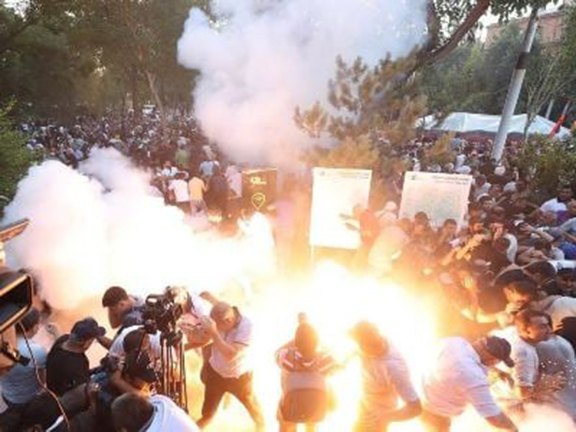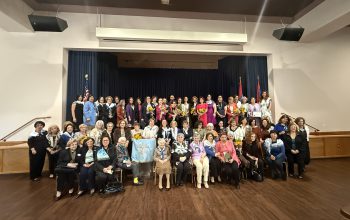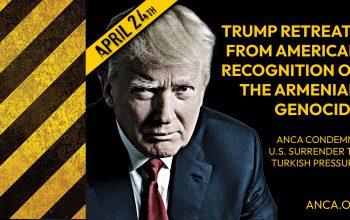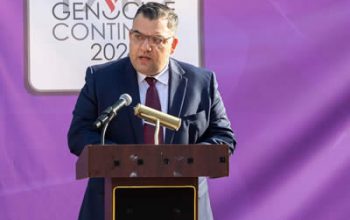Law enforcement authorities have not prosecuted any police officers who injured dozens of anti-government protesters in Yerevan three months ago, despite condemnation from Armenia’s leading civic organizations.
On June 12, thousands of people, led by Archbishop Bagrat Galstanyan, gathered outside the Armenian parliament to demand Prime Minister Nikol Pashinyan’s resignation due to his territorial concessions to Azerbaijan. Clashes erupted shortly before security forces launched dozens of stun grenades into the crowd. This resulted in injuries to at least 83 protesters and 8 journalists.
The use of force was strongly criticized not only by Galstanyan’s opposition-backed movement but also by 17 mainly Western-funded NGOs. In a joint statement, they described the actions as “unnecessary, disproportionate, and illegal.”
Armenia’s Investigative Committee defended the crackdown, claiming it prevented “mass disturbances.” The committee, echoing Pashinyan’s statements, alleged that protesters attempted to break through police lines to storm the parliament.
Only one person has been charged with participating in the “mass disturbances,” while 14 others were accused of “hooliganism,” which mainly involved throwing plastic bottles and other objects at riot police.
Two days after the violence, the Investigative Committee announced a criminal investigation into “the proportionality and legality” of the police actions. However, the agency, led by one of Pashinyan’s close associates, has not brought charges against any officers.
Zaruhi Hovhannisyan, a human rights activist, stated on Thursday that the failure to prosecute any police officers is politically motivated. She argued that Pashinyan’s assertion that the riot police acted “legitimately and professionally” prevented any objective investigation into the violence.
Ruben Melikyan, an opposition-linked lawyer representing some of the charged protesters, similarly criticized the “lack of political will” to conduct a thorough investigation. He claimed that Armenia’s security forces are now primarily focused on keeping Pashinyan in power rather than upholding the law.
Fifty-seven of the injured suffered shrapnel wounds, which experts believe may have been caused by powerful Zarya-3 grenades. These grenades had not been authorized by the Armenian Health Ministry at the time. It was only on June 26, two weeks after the crackdown, that Health Minister Anahit Avanesyan officially added the Russian-made grenades to the ministry’s list of approved crowd control equipment.
According to a Russian defense industry website, the Zarya-3 is “designed to temporarily suppress mental stability of armed criminals with acoustic and light effects.” Former senior police officials in Yerevan have stated that these grenades were never used for crowd control under previous Armenian governments.
Both the Investigative Committee and Armenian police have refused to specify the type of explosive devices heavily used against protesters on June 12.
Additionally, dozens of other protesters were seriously injured by police after Archbishop Galstanyan began his campaign for regime change on May 9. No police officers have been charged over those incidents, including the May 27 beating of an opposition parliamentarian, Ashot Simonyan, by a special police squad.




